
Why?
Because brands are finding it harder and harder to gain exposure and reach their fans and followers on platforms like Facebook. Also, because companies are finally realizing that people today more than ever, seek to satisfy the need for a “sense of belonging,” to express, to learn, and to share.
(This is what we’ve been saying in: this, this, and this article.)
The point is, that as a result of this, big brands and #SMM or #CMM, are focusing their attention on the potential of Facebook groups, Google+ Communities, Linkedin Groups, and other online communities. They not only understand that these spaces generate super valuable conversations that fanpages don’t allow for, but they can also find a super segmented public.
For example, NaturallyCurly is one of the largest online communities and is an incredible niche for brands and companies. Lots of which are already capitalizing on, as well as supporting, and collaborating with.
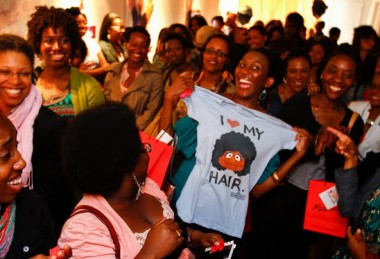
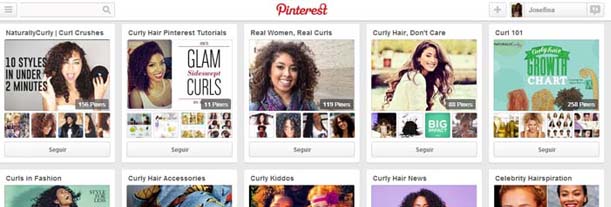
A- Origin of the Power that Facebook Groups and Other Communities Currently Have
First of all, this is a great opportunity to recall the definition of an online community. Then, we’ll be able to see where its potential comes from. Ignite Real Time puts it simply and clearly :
“Three words sum up an online communtiy: people, collaboration, and content.”
1- An online community is created and developed around a topic or particular purpose. Those involved come together to get advice, answer questions, receive support, gain recognition and status, share information, experiences, and to network , etc… In all types of communities, there are people who assume different roles and usually do it voluntarily: observers, facilitators, leaders, and others who give some other kind of support. What defines and distinguishes the spirit of each community is that users collaborate around a common theme or purpose that unites them, and they themselves provide valuable and meaningful content for the rest of the participants.
An excellent example for us start with is: Warrior Forum. The oldest and largest community in the marketing world. It was started in 1997, and has managed to monetize the forum so well, that they have a monthly income exceeding several MILLION dollars. Wow, they’ve managed to do pretty well, right?
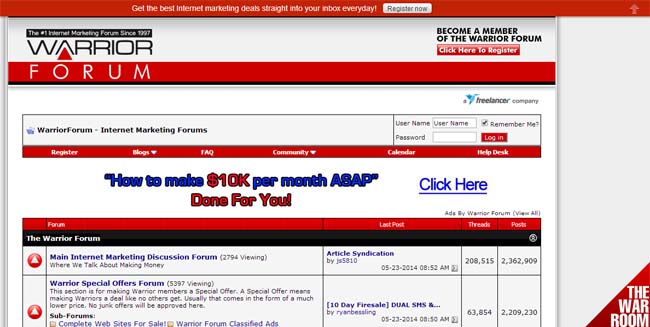
3- There are different types of communities, and each ones provides a unique space where brands can and should take advantage of to improve their business and image. Lots of information can be obtained including: insights gained from the discussions and debates, finding out what the problematic issues related to an industry, product, or particular service are, or listening closely to which interests and issues generate discussion in your niche of the market. These are all reasons that make communities excellent tools for getting information and ideas to help you improve products, develop new services, excel in customer service, obtain loyalty, and interact more closely with your target audience.
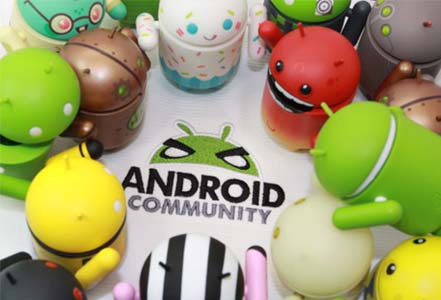
-
Support Communities: These are created to provide product support and attention. Usually these communities are built by the companies to open a channel of service or problem solving for their clients. Although they are always moderated and led by specialists or technicians from the company, brands take advantage of the collaborative nature of the community, where the participants themselves provide answers and help other users.
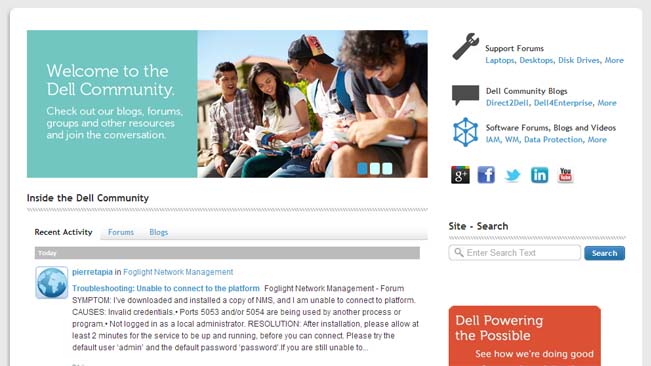
-
Internal Communities: created to be used by the members of a company. Collaboration among its employees enables them to increase productivity and avoid duplicative effort.
-
Media Communities: developed around TV shows, news, sports, movies, or any content related to entertainment.
-
Topical Communities: created to address specific issues and bring together people who like a certain topic or sharing issues related to it.
-
These are a bit more specified, but they share the same characteristics as the previous ones: Technology Communities, Gaming Communities, and Educational Communities.
4- Each community designs guidelines to ensure the quality of its content and conversations. By doing this, it’s much easier to establish the identity and culture of the community. The people who’ve choose to participate online accept and share these codes, and are all committed to sustaining and developing the spirit and culture of the community. However, given the characteristics of social media sites, it becomes a very complicated job for brands to be successful in this aspect .
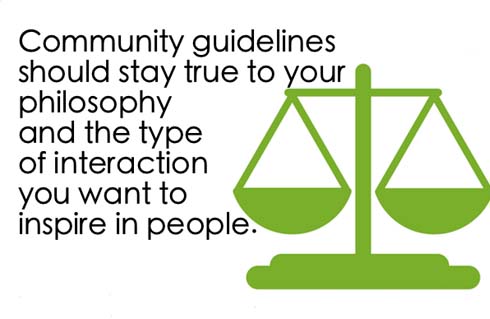
An excellent example of how to use guidelines to shape the spirit, identity, and culture of a community is Inbound.org.
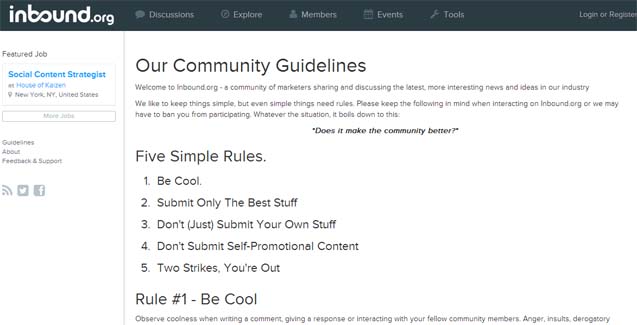
If you’re not sure how to create guidelines or what needs to be included, here’s a list of 6 aspects that shouldn’t be left out:
- Voice: define the style and personality of the community.
- Remember why people are here, the reason for creating your community, and what makes its distinct. Communicate your aspirations and it will serve as inspiration for the users.
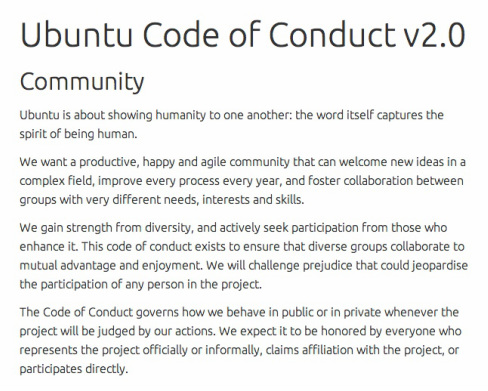
- Establish credibility and trust: the best way to attract outstanding people is showing the level of content and quality of participants in the community. It’s also a good way to auto-segment.
- Communication: inform what kinds of content, vocabulary, and sharing will be accepted.
- Guide conflict resolution: Indicate under what circumstances the moderators will intervene and how to avoid relapsing into the same situations.
- Indicate the tolerance policies that you’ll assume against violations of the guidelines and what actions will be taken against bad behavior. People must know what the consequences will be if they exceed them.
B- Small, but Really Powerful Info:
5- Some of the best discussions aren’t happening on Facebook or Twitter, but in groups and on forums.
6- Marketers are realizing that is more productive and profitable to communicate with a small segmented audience than to target to a large market full of noise, where discussions aren’t that great or are of little value.
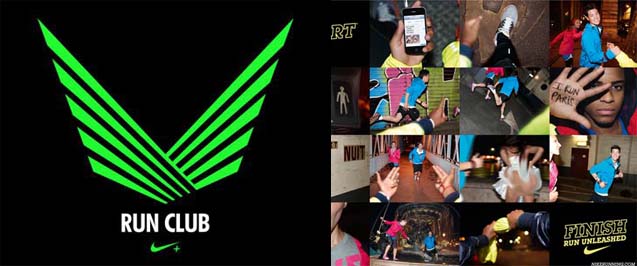
8- Expanding on the above: 90% of all online conversations related to banking services and products happen on forums. A study by Jason Falls examined some other industries to see if it was just a trend in the banking market, and the results were quite surprising: in all industries analyzed, forums were positioned as THE space where people prefer to discuss, talk, and ask questions about products or services.
9- The average time spent on a web site or blog is about 3 minutes. On the other hand, the time users spend on a forum or group, is 20 minutes minimum. Many have some participants who spend hours and hours interacting and collaborating with each other.
10- Just like we were saying earlier, community members play a much more active role, than just “likers”. Unlike social media sites, the participants themselves generate the content. This means, it no longer depends solely on the brand to keep the blog, page, fan page, Twitter account, etc.. active. Users spontaneously assume responsibility for the community, and uphold its spirit and culture.
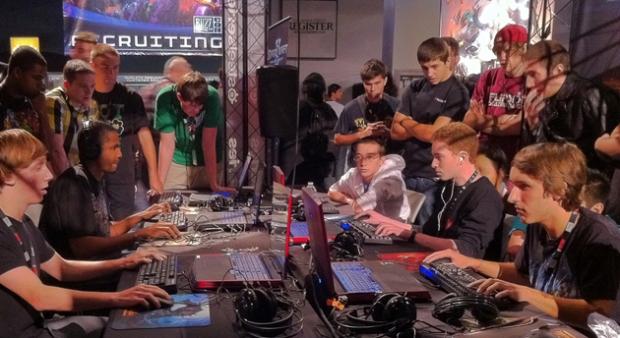
12- These communities are managed by several people who perform various actions such as: moderating the conversations, helping maintain order, reviewing the quality of conversations and shared content , as well as actively participating in discussions and debates. In contrast, on social media sites, neither the public nor the brands have this kind of opportunity. This makes online communities and forums yet another space and opportunity for brands to humanize themselves. Users stop talking to a company and start talking to a person. They’ll start to share and exchange opinions with the people who represent your brand.
13- Every time someone names a brand or product on a forum, it becomes additional content providing more exposure and scoring more points for the ranking systems that search engines use.
C- “Lady Gaga’s Secrets” for Creating a Successful Online Community
14- Aren’t these names enough to get you motivated!? Coca-Cola, Nike, and Cirque du Soleil, they’ve all realized the value of having an online community, and had to stand in line to work with The Backplane, the agency who rose to stardom after building one of the largest and most important communities, Lady Gaga – LittleMonsters. Recently they did the same with Fans United, Gunnar, and the most successful: TeamCrafted.
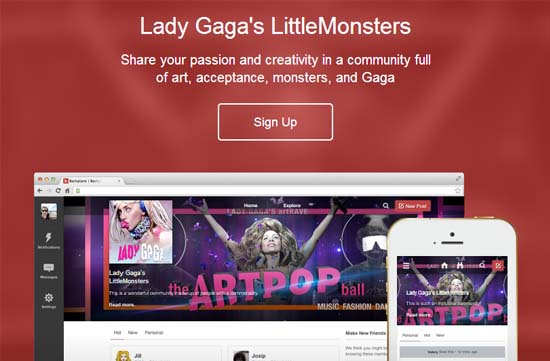
I- Keep It Closed: the more public the forum is, the more people tend to keep quiet. So, if you want members of an online community to open up on a personal level, it’s important to make them feel they are in a safe place and amongst other people with the same interests and codes. Michelsen suggests that, unless at the beginning, communities should be kept private, or at least require an invitation.
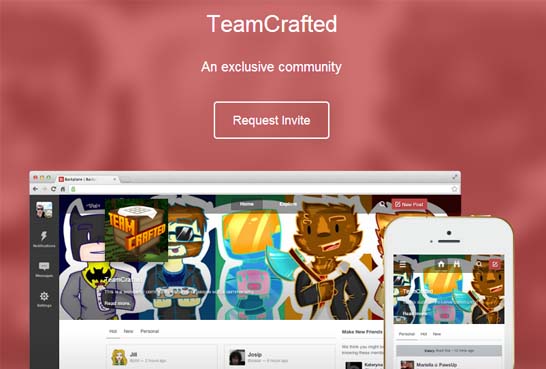
You don’t want an unruly environment, but rather a community focused on a single purpose, where people are constantly motivated to build a united and cohesive community. In addition, when you start with something small, it’s easier to moderate the discussions, and more importantly, define its identity and culture.
III- Reward the faithful: all this requires a lot of commitment and work, which eventually should result in a multilevel experience where leaders and advocates get some sort of benefits and special treatment. This allows the community to identify and reward the most valuable contributors, and challenge and seduce the rest of the participants to reach their level. This type of interaction is invaluable because on other social networks, due to their nature, don’t allow for it.
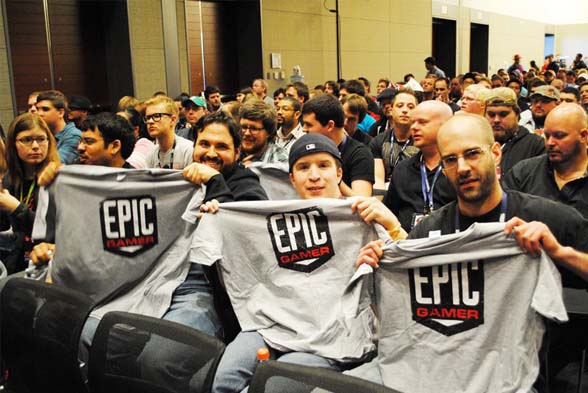
V- An Effective Online Community is an Effective Offline Community: if this is achieved, the online participation could open many possibilities offline and bring lots of benefits.
D- Why it’s Worth It to Start Out with Facebook Groups
15 – Facebook Groups vs. Pages
Jon Loomer, as always makes it clear:
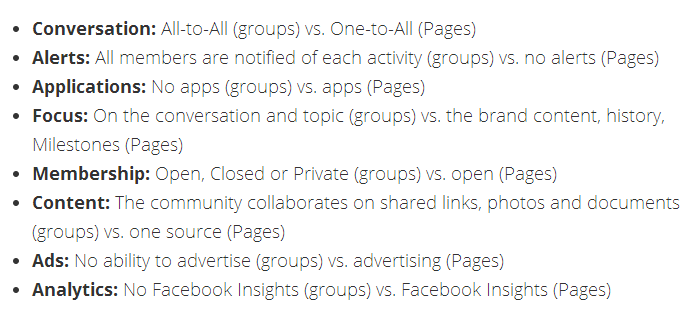
To Close the Idea:
Brands are realizing that there are super valuable interactions that take place in groups and online communities, whereas on fan pages, because of their nature and restrictions, just don’t allow for it. So, these spaces are being considered once again for marketing strategies. Their power resides in the fact that they are spaces that provide you with a highly segmented audience that wants to interact, learn, and collaborate with each other.
There are many benefits of creating communities and groups. Not only is the nature of the structure that defines and distinguishes a community beneficial, but also that they’re able to forego the constant problems in reaching audiences that large or small brands and companies face.
So, if you liked this post, then: share, comment, and discuss! Cheers!
